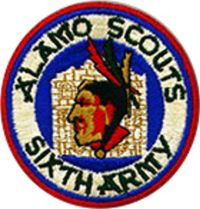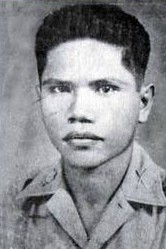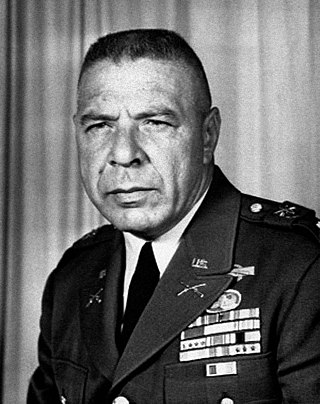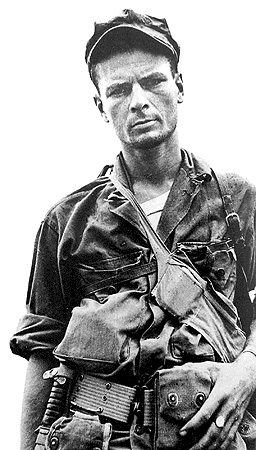
The Kempeitai was the military police of the Imperial Japanese Army (IJA). The organization also shared civilian secret police that specialized clandestine and covert operation, counterinsurgency, counterintelligence, HUMINT, interrogate suspects who may be allied soldiers, spies or resistance movement, maintain security of prisoner of war camps, raiding to capture high-value targets, and providing security at important government and military locations at risk of being sabotaged roles within Japan and its occupied territories, and was notorious for its brutality and role in suppressing dissent. The broad duties of the Kempeitai included maintaining military discipline, enforcing conscription laws, protecting vital military zones, and investigating crimes among soldiers. In occupied areas, it also issued travel permits, recruited labor, arrested resistance, requisitioned food and supplies, spread propaganda, and suppressed anti-Japanese sentiment. At its peak at the end of World War II, the Kempeitai had about 35,000 personnel.

The Raid at Cabanatuan, also known as the Great Raid, was a rescue of Allied prisoners of war (POWs) and civilians from a Japanese camp near Cabanatuan, Nueva Ecija, Philippines. On January 30, 1945, during World War II, United States Army Rangers, Alamo Scouts and Filipino guerrillas attacked the camp and liberated more than 500 prisoners.

Ghost Soldiers: The Epic Account of World War II's Greatest Rescue Mission is a non-fiction book written by Hampton Sides. It is about the World War II Allied prison camp raid at Cabanatuan in the Philippines.

Henry Andrews Mucci was a colonel in the United States Army Rangers. In January 1945, during World War II, he led a force of 121 Army Rangers on a mission which rescued 513 survivors of the Bataan Death March from Cabanatuan Prison Camp, despite being heavily outnumbered. It is widely considered the most successful rescue mission in the history of the United States military.

The Alamo Scouts was a reconnaissance unit of the Sixth United States Army in the Pacific Theater of Operations during World War II. The unit is best known for its role in liberating American prisoners of war (POWs) from the Japanese Cabanatuan POW camp near Cabanatuan, Nueva Ecija, Philippines in January 1945.

Captain Juan Pajota was involved in the Raid at Cabanatuan, an action which took place in the Philippines on January 30, 1945 by US Army Rangers and Filipino guerrillas and resulted in the liberation of more than 511 American prisoners of war (POWs) from a Japanese POW camp near Cabanatuan.

The 6th Ranger Battalion was a United States Army Ranger Battalion which saw action in the Pacific during World War II. The battalion is best known for its role in the Raid at Cabanatuan in the Philippines in January 1945.

The Raid on Los Baños in the Philippines, early Friday morning on 23 February 1945, was executed by a combined United States Army Airborne and Filipino guerrilla task force, resulting in the liberation of 2,147 Allied civilian and military internees from an agricultural school campus turned Japanese internment camp. The raid has been celebrated as one of the most successful rescue operations in modern military history. It was the second precisely-executed raid by combined U.S.-Filipino forces within a month, following on the heels of the Raid at Cabanatuan at Luzon on 30 January, in which 522 Allied military POWs had been rescued.

Margaret Elizabeth Doolin "Peggy" Utinsky was an American nurse who worked with the Filipino resistance movement to provide medicine, food, and other items to aid Allied prisoners of war in the Philippines during World War II. She was recognized in 1946 with the Medal of Freedom for her actions.

Arthur D. "Bull" Simons was a United States Army Special Forces colonel best known for leading the Sơn Tây raid, an attempted rescue of U.S. prisoners of war during the Vietnam War from a North Vietnamese prison at Sơn Tây. He also led the successful 1979 rescue of two employees of Electronic Data Systems from prison in Iran.

Eduardo "Tatang" Lopez Joson Sr. was a captain of Filipino guerrillas during the Japanese occupation of the Philippines during World War II. He later became the mayor of Quezon, Nueva Ecija and eventually the governor of Nueva Ecija in a span of 31 years until his death in 1990, making him the second longest serving politician serving one government position in the country.

Robert Lapham was a reserve lieutenant in the US Army in World War II. He served in the Philippines attached to the 45th Infantry, evaded capture in the spring of 1942, and organized and led one of the largest and most successful guerrilla armies on the central plains of the northern island of Luzon. He was promoted to major by war's end, age 28, and was awarded the Distinguished Service Cross by General Douglas MacArthur. Lapham was the third person, after President Franklin Delano Roosevelt and MacArthur, to receive the Philippine Legion of Honor. Historian Norling says that Laphams's Luzon Guerrilla Army Force (LGAF) was probably the most efficient of the many guerrilla armies on Luzon. The U.S. Guerrilla Affairs Division commended Lapham for having the best-disciplined guerrilla organization.

Robert W. Prince was an officer in the United States Army's elite 6th Ranger Battalion. In 1945 he was chosen personally by Lt. Col. Henry Mucci to plan the rescue at the Cabanatuan POW camp in the Philippines.

Back to Bataan is a 1945 American black-and-white World War II war film drama from RKO Radio Pictures, produced by Robert Fellows, directed by Edward Dmytryk, that stars John Wayne and Anthony Quinn. The film depicts events that took place after the Battle of Bataan (1941–42) on the island of Luzon in the Philippines. The working title of the film was The Invisible Army.

Rafael Manio Ileto was a Filipino general who served as the 22nd Secretary of the Department of National Defense (DND) of the Philippines. He also became the Vice Chief of Staff of the Armed Forces of the Philippines (AFP). He also served as Philippine Ambassador to Turkey, Iran, Cambodia, Thailand, and Laos.

The Palawan massacre occurred on 14 December 1944, during World War II, near the city of Puerto Princesa in the Philippine province of Palawan. Allied soldiers, imprisoned near the city, were killed by Imperial Japanese soldiers. Only eleven men managed to survive, while 139 were killed.

The Cabanatuan American Memorial is a World War II memorial located in Cabanatuan, Nueva Ecija in the Philippines. It is located on the site of what was once Camp Pangatian, a military training camp which operated for twenty years until it was converted into an internment camp for Allied prisoners of war during the Japanese occupation.

The 91st Infantry Division was a division of the Philippine Army under the United States Army Forces in the Far East (USAFFE).
Bataan Rescue is a 2003 television documentary film about the Raid at Cabanatuan. Produced by PBS for the American Experience documentary program, it begins with the Fall of Bataan in 1942 up to the titular event in January 1945, where more than 500 prisoners of war were liberated from a Japanese camp in Cabanatuan, Nueva Ecija. Directed by Peter Jones and written and produced by David Axelrod, the film first aired on PBS in the United States on July 7, 2003.
Naomi Flores (1921-2013) was active in the Philippine resistance to the Japanese occupation of the Philippines in World War II. Flores was a member of the "Miss U Spy Ring." Working clandestinely and at great risk to herself, she delivered life-saving supplies and messages to American and Filipino prisoners of war in prison camps. She later married an American and moved to the United States. She was honored by the United States with a Medal of Freedom in 1948.


















